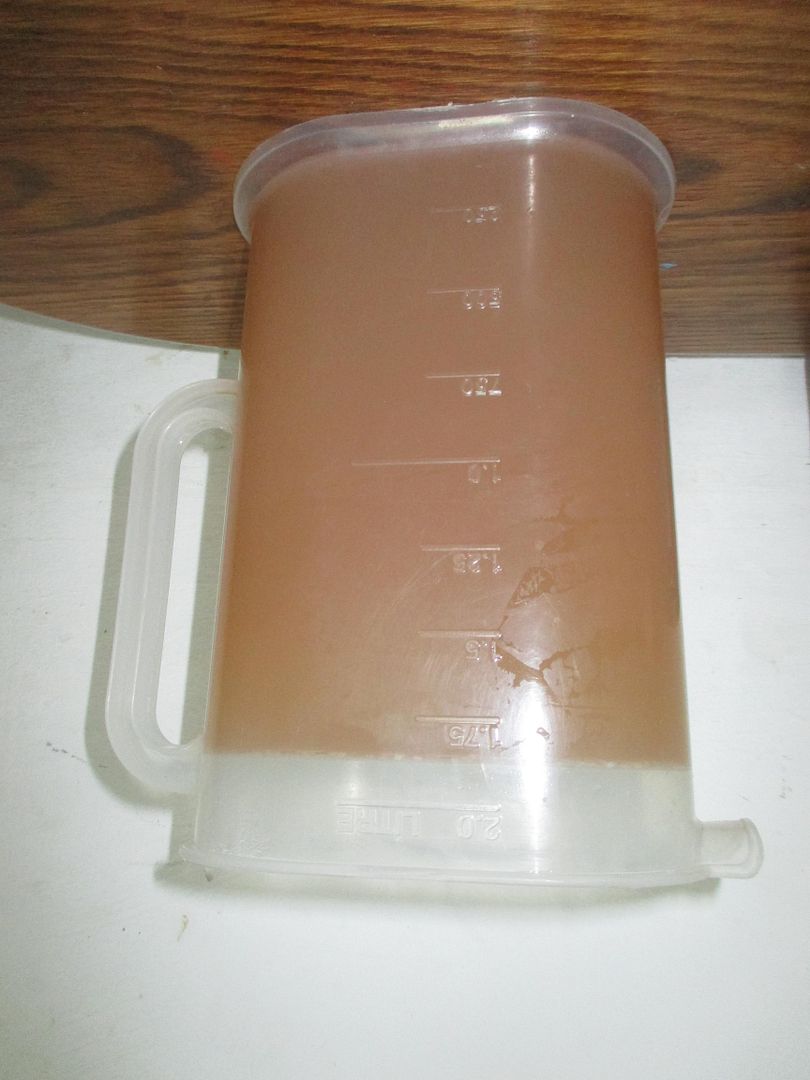 For a while now, I’ve known about the food waste reduction technique of saving veggie scraps and bones and using them to make broth. Other than homemade vinegar, or compost, I didn’t know what you could do with fruit scraps.
For a while now, I’ve known about the food waste reduction technique of saving veggie scraps and bones and using them to make broth. Other than homemade vinegar, or compost, I didn’t know what you could do with fruit scraps.
Then my friend told me that she saves her fruit scraps and uses them to make fruit juice! What a revelation! I’d never thought of doing that. Never even crossed my mind. My kids drink water and kombucha, but sometimes we want something else as a treat, and this way we can have fruit juice without having to pay anything!
What you need for this is any fruit scraps that you can’t use in other ways. If you have apple peels or half eaten apples- it’s a waste to use it for this- might as well chuck it in the freezer until the next time you make applesauce.
Examples of what you can use is apple cores, pear cores, prickly pear peels, strawberry tops (including leaves), pineapple peels, cherry pits, peach pits, kiwi peels, date pits, quince cores, etc… I would not use orange or other citrus peels for this, since they’d just make the drink bitter. However, if you have the inside of a squeezed orange or lemon, minus the pith and peel, you can use that as well. (Use the citrus peels to make a great citrus cleaner or candied citrus peels.)
Since most people won’t have a lot of these available at one time, each time you eat fruit scraps and have some left over, chuck them into a bag or container in the freezer, and when you have enough saved up, then it’s time to make your juice.
Stick them all in a crock pot and cover with water. Cook for a few hours on high, or 12 hours on low. Alternatively, if you don’t have a crock pot, you can bring to a boil, and then simmer for around an hour on the stove.
Strain the liquids out of the solids with a colander.
You should get a decent amount.
If you’re, perhaps, tempted to try blending the fruit scraps before straining… don’t. It’ll be a gross, unappetizing mess that won’t strain easily at all.
You should now have a pitcher of fruit juice ready to use for anything. Each time you make this, the variation of fruits used will likely change, so the flavor will be different every time, but always good.
Since we don’t need things so sweet and like to stretch our treats further, I tend to dilute this juice with water before serving it.

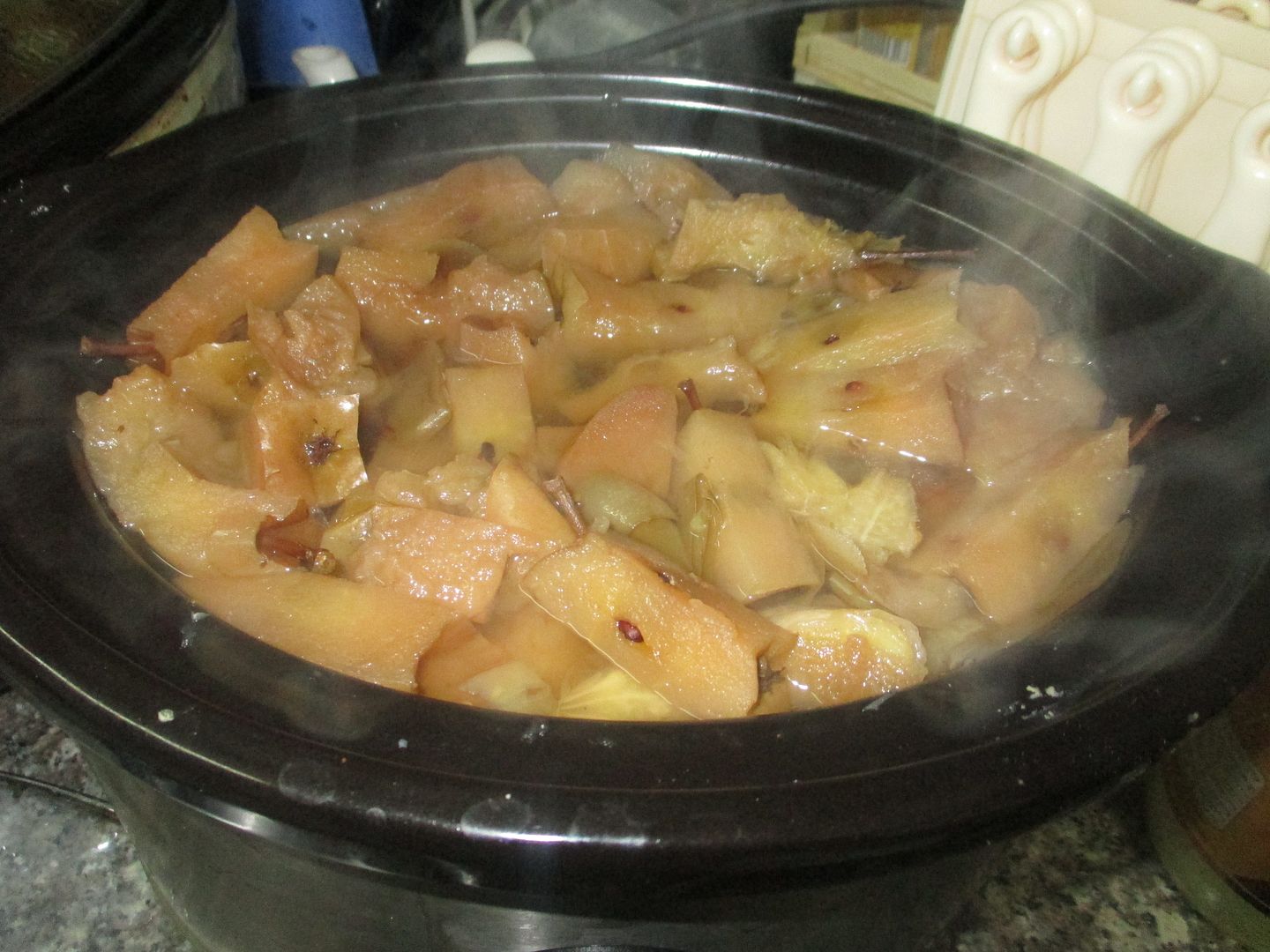
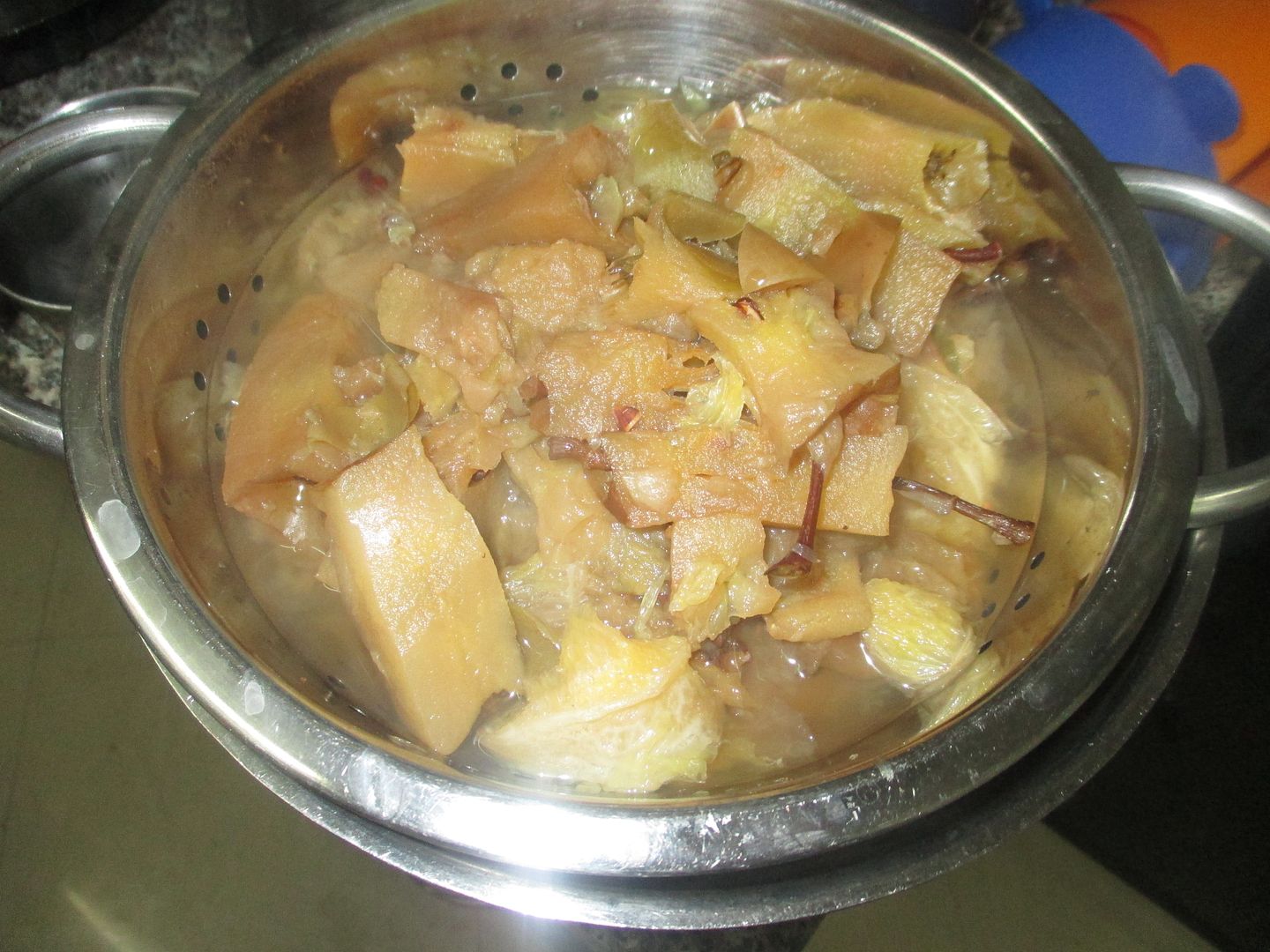
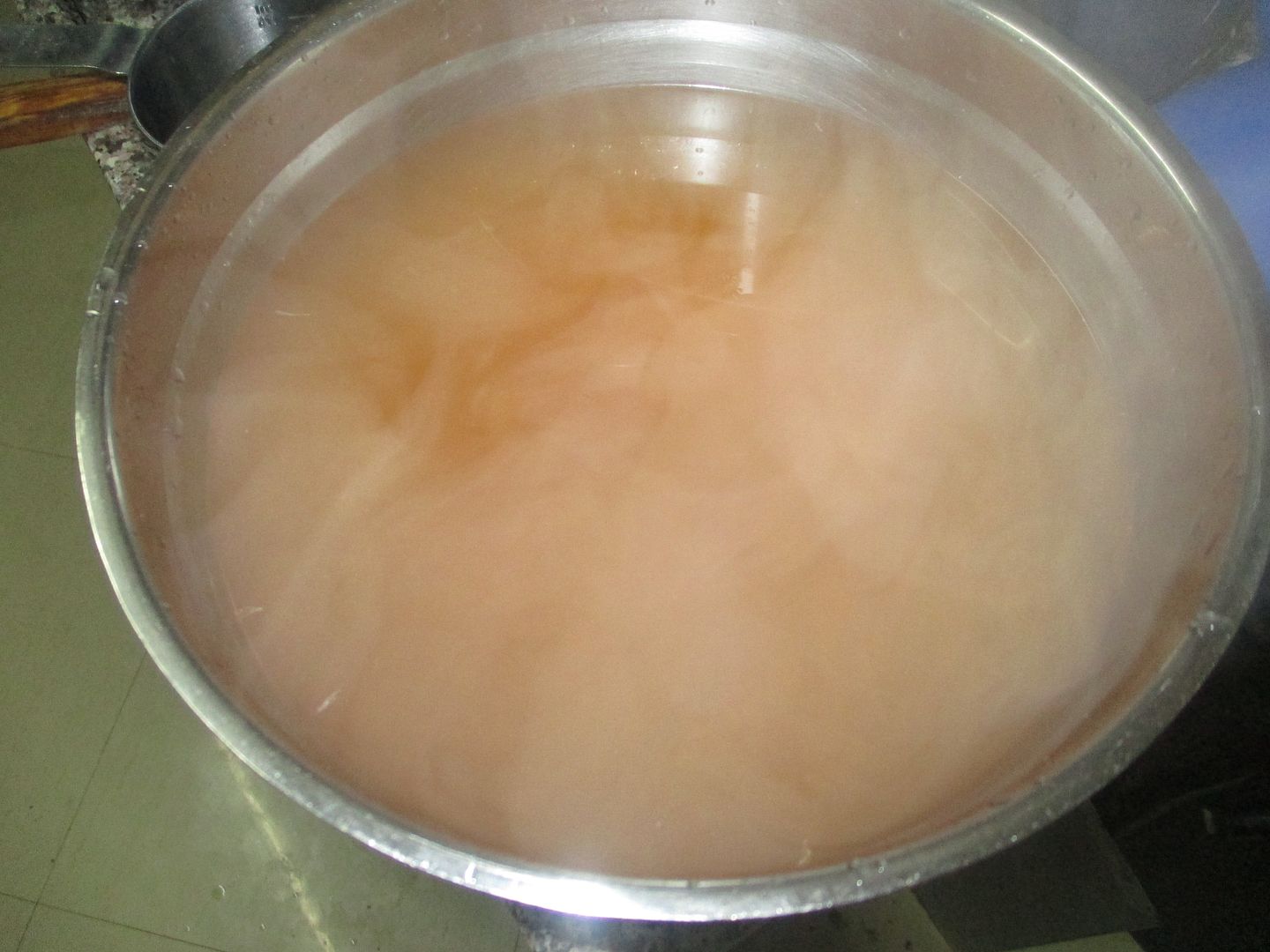
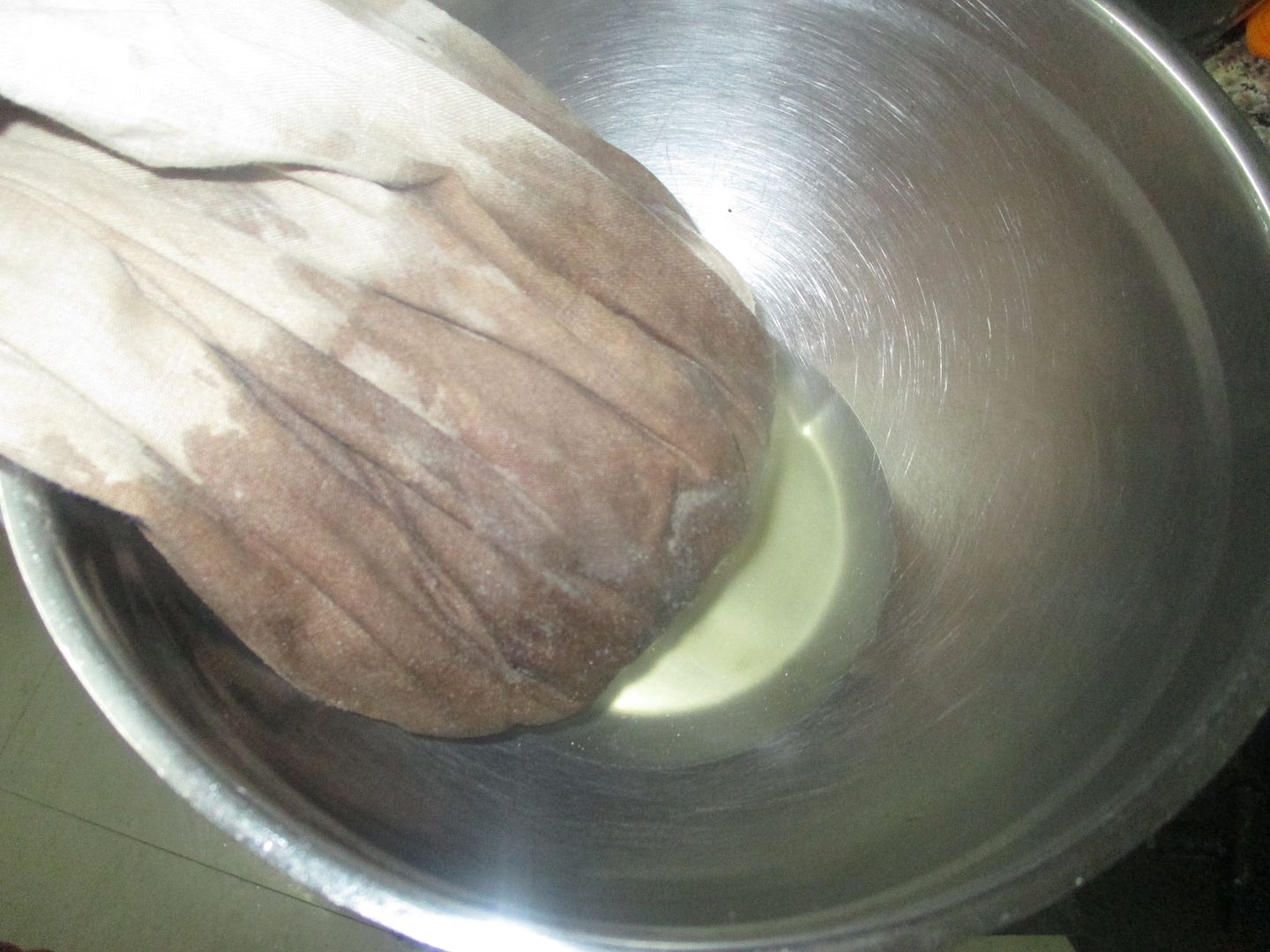
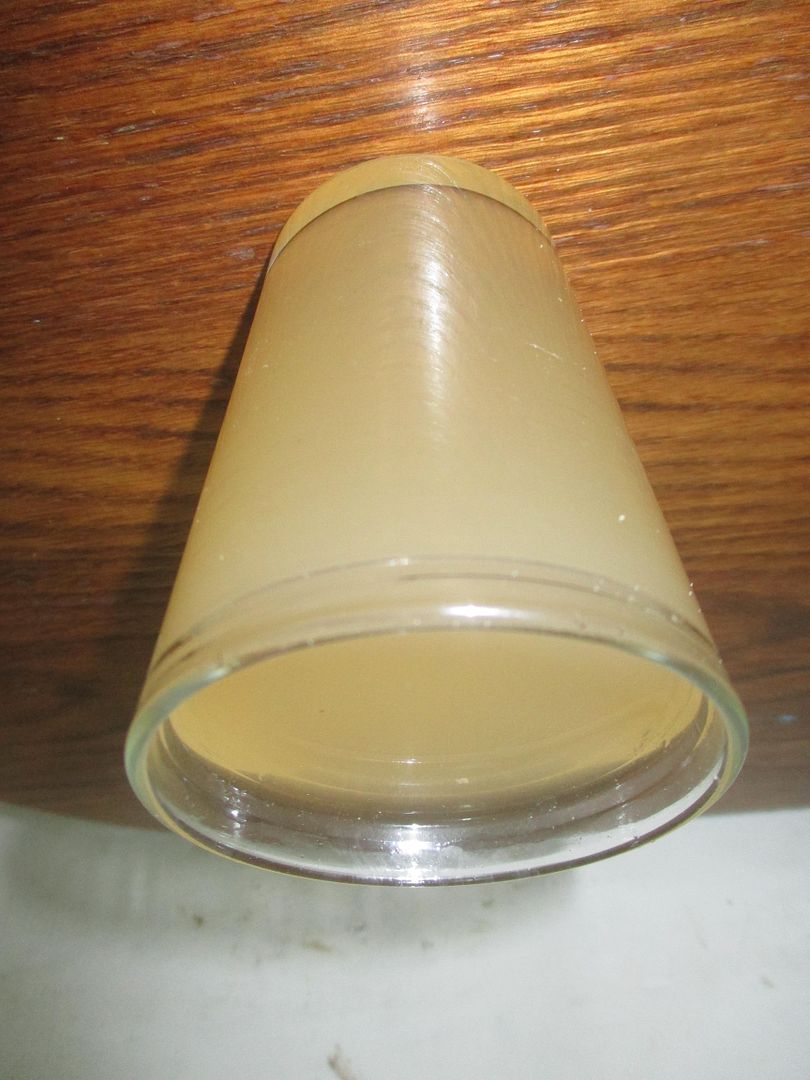




0 Responses
we have met in real life and i just found this by googling. small world!lots of love!
saving up fruit scraps in the freezer, but do you use apple cores that people have bitten? right now i am sticking to ones i cut up for baking and such
we have met in real life and i just found this by googling. small world!lots of love!
saving up fruit scraps in the freezer, but do you use apple cores that people have bitten? right now i am sticking to ones i cut up for baking and such
This comment has been removed by a blog administrator.
This comment has been removed by a blog administrator.